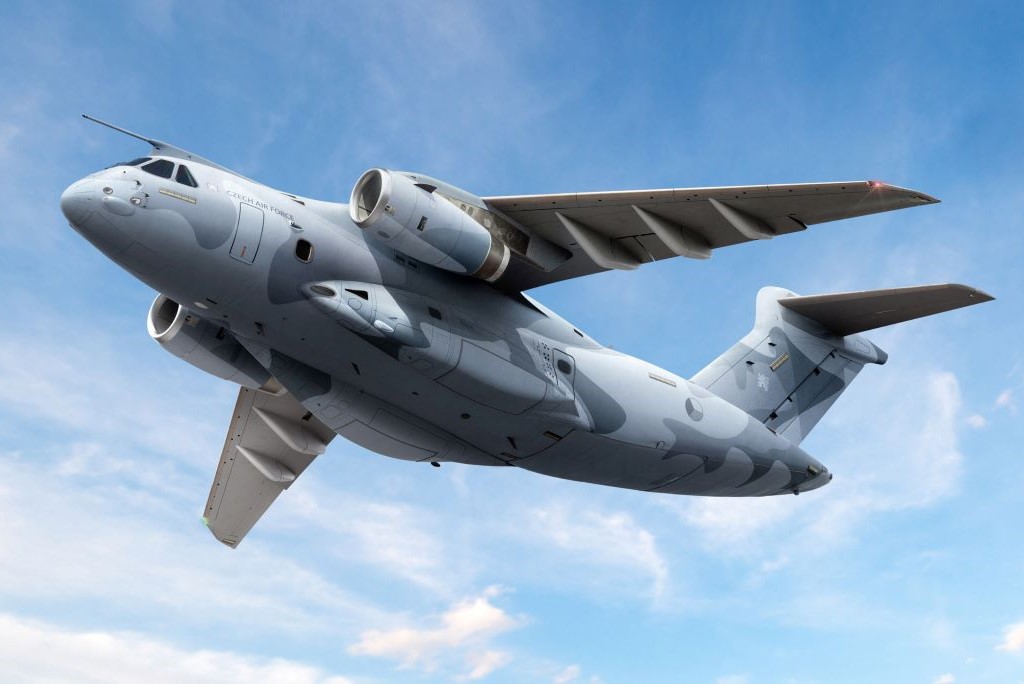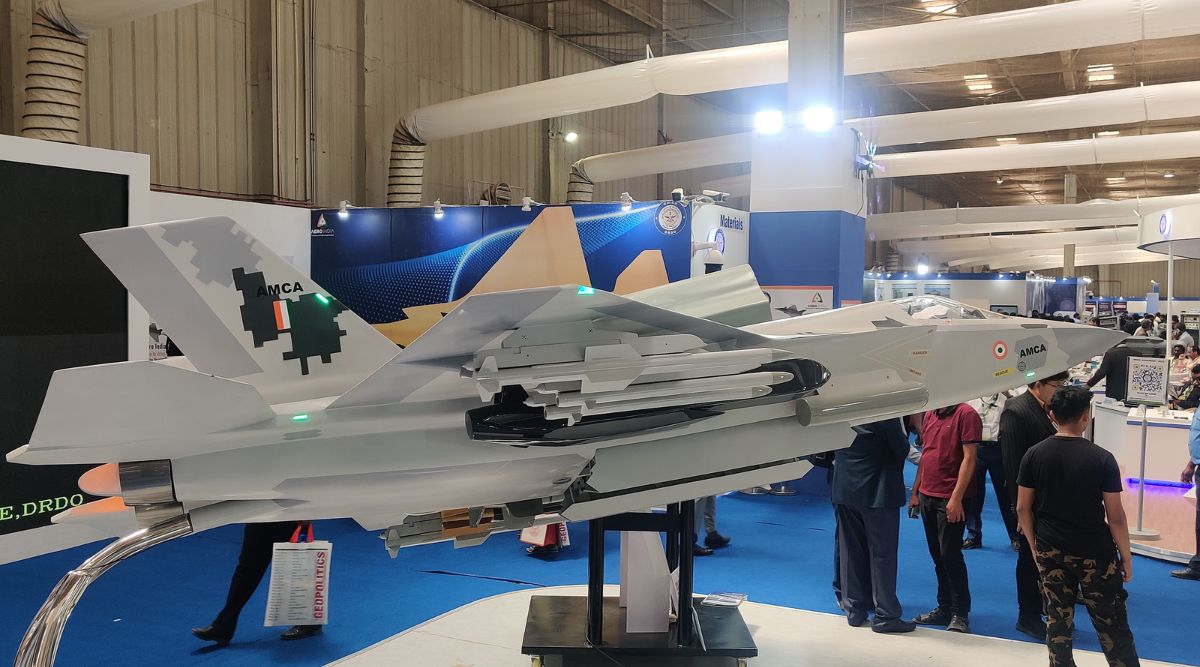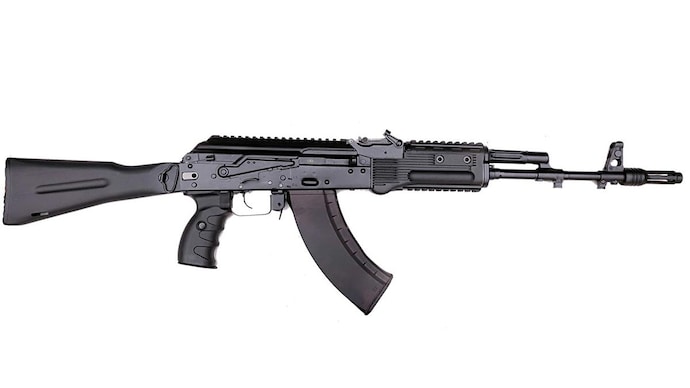SOURCE: RAUNAK KUNDE / NEWS BEAT / IDRW.ORG

Embraer has cast aside plans for an immediate expansion of the C-390 military transport aircraft. Their focus remains on maximizing the capabilities of the current design to meet operational needs. This decision comes as Embraer actively pitches the C-390 to the Indian Air Force (IAF) for their medium transport aircraft requirement.
The C-390 boasts a 26-tonne concentrated load capacity and a 23-tonne distributed load capacity, along with impressive airdrop performance. These specifications fall squarely within the IAF’s 18-30 tonne requisition. To further solidify their bid, Embraer has partnered with Mahindra in India for potential local production of the C-390.
Continue readingSOURCE: RAUNAK KUNDE / NEWS BEAT / IDRW.ORG

Hindustan Aeronautics Limited (HAL) is buzzing with activity after receiving a Request for Proposal (RFP) from the Indian Ministry of Defence (MoD) for a staggering 156 LCH Prachand light attack helicopters. But HAL isn’t resting on its laurels. They’ve already begun looking ahead, tweaking the LCH platform for potential future technologies, even if the armed forces haven’t explicitly requested them yet.
Drawing lessons from the recent Ukraine conflict, HAL anticipates a growing demand for integrating Unmanned Aerial Vehicles (UAVs) with attack helicopters. This would likely involve large display screens and helmet-mounted displays for enhanced situational awareness. HAL is proactively preparing the LCH for this integration, confident that such a request from the Indian armed forces is on the horizon.
Continue readingSOURCE: RAUNAK KUNDE / NEWS BEAT / IDRW.ORG

The Indian Army is set for a significant boost in its firepower with the Ministry of Defence (MoD) expected to approve the procurement of nearly 2,000 155mm terminally guided munitions (TGMs) later this year. This move marks a major stride towards self-reliance in critical defence technology.
Last year, the Army took a crucial step by issuing Project Sanction Orders (PSOs) to five domestic companies under the Make-II procurement scheme. These companies – Munitions India Ltd (MIL), Adani Defence Systems and Technologies Ltd (ADSTL), Bharat Forge Ltd, Economic Explosives Ltd, and Premier Explosives Ltd – were tasked with developing prototypes of 155mm TGMs.
Continue readingSOURCE: AFI

India’s quest for self-reliance in defense technology takes a significant leap forward with the Advanced Medium Combat Aircraft (AMCA) program. Official sources confirm that the design for this indigenous fifth-generation fighter jet is complete, paving the way for an exciting phase of development.
With the design finalized, the AMCA program is now setting its sights on the first prototype. Official estimates suggest this critical milestone will be achieved by 2028-29. This prototype will be instrumental in testing and refining the aircraft’s capabilities before full-scale production can begin.
Continue readingSOURCE: AFI

The Aeronautical Development Agency (ADA) is taking a deep dive into innovative cooling solutions for the AMCA (Advanced Medium Combat Aircraft) program. Their focus: active cooling of the engine bay and nozzle, crucial for maintaining stealth capabilities. Fifth-generation stealth aircraft require a delicate balance. Traditional engine bay ventilation systems often rely on inlet scoops to draw in cooling air. However, these scoops can create unwanted radar signatures, hindering the aircraft’s stealth properties.
ADA is exploring the feasibility of an alternative approach – engine bay ventilation using an ejector nozzle. This design eliminates the need for inlet scoops.
Continue readingSOURCE : AFI

After significant achievements in lunar and solar explorations, the Indian Space Research Organisation (ISRO) under the leadership of Chairman S. Somanath, is now setting its sights on a new frontier: asteroids. The goal is not just to land on these celestial bodies but also to develop strategies to defend Earth against potential catastrophic impacts.
One of the immediate opportunities ISRO is looking at is the observation of Asteroid 99942 Apophis. This asteroid, measuring 335 meters across, is considered one of the most hazardous asteroids that could potentially impact Earth. Apophis is set to pass perilously close to our planet, within a distance of less than 32,000 km, on April 13, 2029.
Continue readingSOURCE: AFI

In a move that underscores growing maritime cooperation between India and Thailand, Thailand has stationed a Liaison Officer at the Indian Navy’s Information Fusion Centre – Indian Ocean Region (IFC-IOR) located in Gurugram, India.
The IFC-IOR, established in 2018, serves as a central hub for information sharing and collaborative maritime security efforts in the Indian Ocean Region, stretching from the Malacca straits to the Suez Canal. This crucial waterway is a vital global trade route, and the IFC-IOR plays a critical role in maintaining regional security and stability.
Continue readingSOURCE: IDRW.ORG

Former Air Chief Marshal Fali H. Major (Retd.), the only helicopter pilot to ever lead the Indian Air Force, has expressed his strong support for the government’s decision to procure a large number of attack helicopters. This historic deal, valued at approximately ?50,000 crore, marks the biggest single helicopter order ever placed by an Indian company and represents a significant boost to the country’s defense sector.
In a media interaction, Air Chief Marshal Major welcomed the news but emphasized the importance of gradually increasing indigenous content in the helicopters. He highlighted that while the current 45% domestic content is a positive step, it should be progressively raised to “respectable levels.” This, according to Major, would ensure an “80% availability rate” for the helicopters, maximizing their operational efficiency for the armed forces.
Continue readingSOURCE: IDRW.ORG

Rosoboronexport/Rostec, a prominent Russian defense exporter, has collaborated with an Indian company to establish the manufacturing of the 3VBM17 Mango Armor-Piercing Fin-Stabilized Discarding Sabot (APFSDS) rounds within India. This initiative aligns perfectly with India’s “Make in India” program, promoting self-reliance in critical defense equipment.
The 3VBM17 Mango APFSDS rounds are designed to penetrate and defeat armored vehicles equipped with composite armor. These advanced rounds are crucial for modern armored warfare, providing superior performance against heavily protected targets. The locally manufactured Mango rounds will equip Indian tanks with enhanced firepower, ensuring they can effectively engage and neutralize contemporary armored threats.
Continue readingSOURCE: AFI

Not so long ago, India had opportunity to have same radar on its Rafale fighter jet also on the LCA-Tejas Mk1A fighter jet fleet. French defense giant Thales offered a derivative of its RBE2 AESA radar, used in Rafale jets, for India’s Tejas Mk-1A fighter variant. This development unfolded in 2017.
Thales conducted successful flight tests in France that summer, analyzing the radar’s performance under various conditions. The company claimed the RBE2 derivative met all of Hindustan Aeronautics Limited’s (HAL) requirements for the Tejas Mk-1A’s combat and air superiority missions. Additionally, Thales emphasized its solution’s ability to integrate seamlessly with the Mk-1A’s tight development schedule.
Continue readingSOURCE: AFI

Indo-Russian Rifles Private Limited, registered and located in India, has produced and transferred 35,000 Kalashnikov AK-203 assault rifles to the Indian Ministry of Defence. The founders of the enterprise from the Russian side are ROSOBORONEXPORT JSC and the Kalashnikov Group (both are subsidiaries of the Rostec State Corporation).
The Kalashnikov AK-203 assault rifle is a version of the AK-200 rifle chambered for the 7.62×39mm cartridge used in the Indian Army. The weapon has the traditional advantages of Kalashnikov assault rifles: reliability and ease of maintenance.
Continue readingSOURCE: AFI

Aditya Ramanathan, a research analyst with the Takshashila Institution, has provided insights into the findings of the 2024 Yearbook released by the Swedish think tank, Stockholm International Peace Research Institute (SIPRI). The yearbook highlights the global increase in nuclear arsenals, including those of India. Ramanathan, an expert on India’s strategic affairs and foreign policy, delves into the implications of these developments.
“We don’t actually know the exact size of India’s nuclear arsenal, but most studies place it in the range of 150-200 warheads,” says Ramanathan. He suggests that any increase in India’s nuclear arsenal is likely a direct response to China’s military advancements. “India has to be concerned about ensuring that enough of its own nuclear forces can survive a Chinese first strike and inflict unacceptable damage in retaliation. To that end, I think India’s response is cautious and well-reasoned.”
Continue readingSOURCE: AFI

Pro-Khalistani organizations have recently urged the incoming U.K. government, anticipated to be led by Labour leader Keir Starmer, to back a controversial “Sikh Manifesto.” This manifesto, which has been the subject of significant criticism, includes statements on geopolitics and hate crimes that have sparked debate among political candidates and the public.
The manifesto outlines ten demands, most notably advocating for the “application of self-determination to the Sikhs.” This phrase is widely interpreted as support for the ongoing campaign for a Sikh ethnostate in the Punjab region, spanning parts of India and Pakistan.
Continue readingSOURCE: AFI

Gajinder Singh, a wanted terrorist and co-founder of the radical outfit Dal Khalsa, passed away from a heart attack at a hospital in Pakistan. He was 74 years old.
Singh was a fugitive for his role in the 1981 hijacking of an Indian Airlines (IA) flight. The plane, carrying over 110 passengers and crew, was diverted to Lahore and used to make demands for the release of Sikh extremists.
Continue readingSOURCE: RAUNAK KUNDE / NEWS BEAT / IDRW.ORG

In a significant stride towards bolstering defence cooperation, India’s National Security Advisor (NSA) Ajit Doval and his US counterpart, Jake Sullivan, convened for the second meeting under the Initiative on Critical and Emerging Technologies (iCET). The discussions focused on co-production, co-development, and research and development (R&D), underscoring the deepening strategic partnership between the two nations.
A key highlight of the meeting was the reiterated offer from the United States to jointly develop a new engine for India’s Advanced Medium Combat Aircraft (AMCA) 5th generation program. This proposal aims to rejuvenate discussions that had previously stalled due to high Transfer of Technology (ToT) levels demanded by India’s Defence Research and Development Organisation (DRDO).
Continue reading